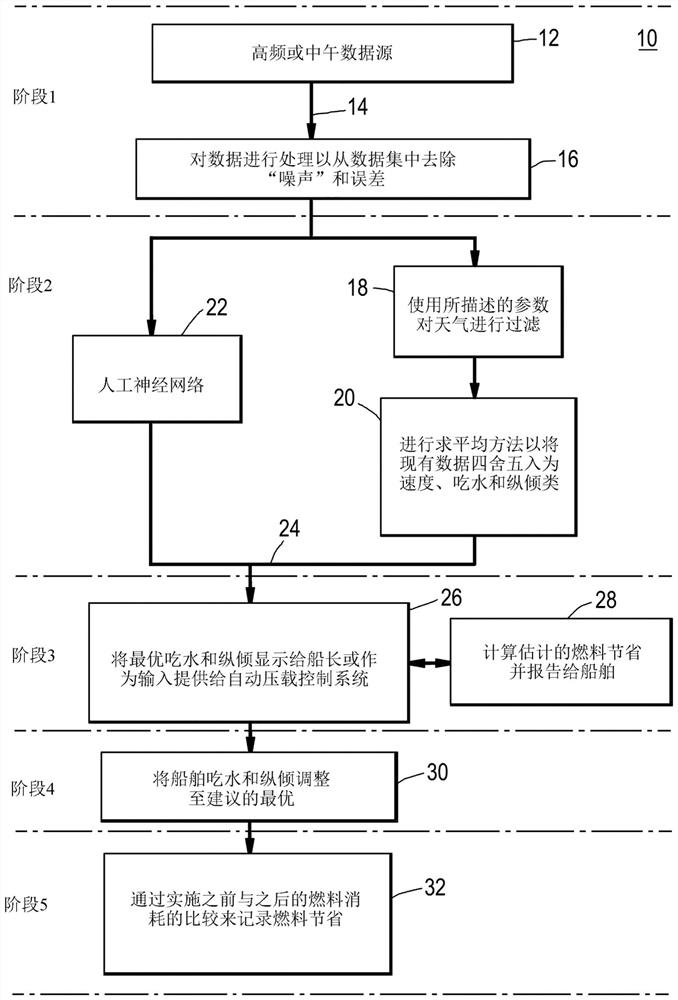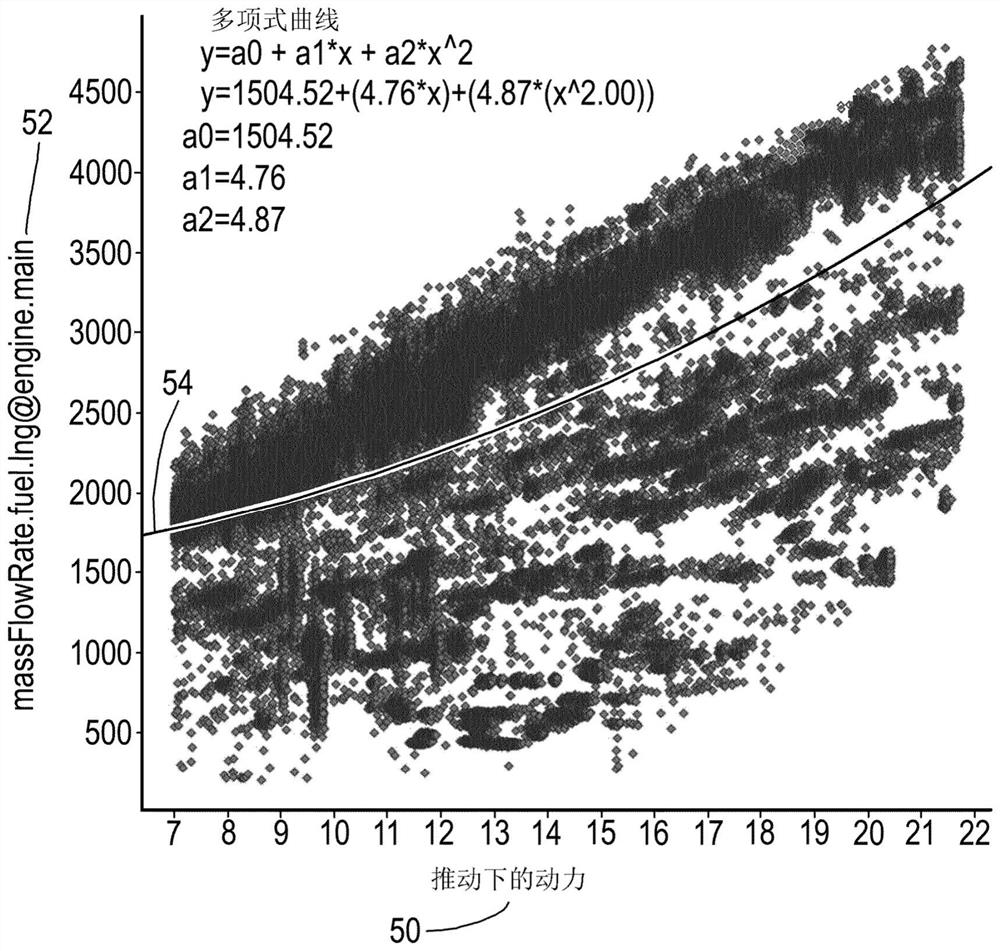Method and system for reducing vessel fuel consumption
A fuel consumption, ship technology, applied in waterborne ship navigation equipment, hull design, transportation and packaging, etc., can solve problems such as slowing down the speed of the ship
- Summary
- Abstract
- Description
- Claims
- Application Information
AI Technical Summary
Problems solved by technology
Method used
Image
Examples
Embodiment Construction
[0040] Certain terms used herein are defined as follows:
[0041] "LNG" means liquefied natural gas, which is generally cooled to at least a temperature at which the gas can assume a liquid phase at a pressure of about 1 bar; for liquefied methane, this temperature is about minus 162°C;
[0042] "Draft" may refer to the depth of water required to float a vessel; the depth below the waterline to the bottom of the hull of the vessel; and the depth of water drawn by the vessel. In this disclosure, "draft" may specifically refer to the depth below the waterline to the bottom of the hull of a vessel; and
[0043] "Trim" refers to the position of the ship relative to the horizontal; in other words, "trim" refers to the difference between the draft at the fore end of the ship and the draft at the aft end.
[0044] Whenever a ship is sailing at a given speed, whether carrying cargo or under ballast, the optimum trim and draft conditions for said ship exist. For ships in service, a l...
PUM
 Login to View More
Login to View More Abstract
Description
Claims
Application Information
 Login to View More
Login to View More - R&D
- Intellectual Property
- Life Sciences
- Materials
- Tech Scout
- Unparalleled Data Quality
- Higher Quality Content
- 60% Fewer Hallucinations
Browse by: Latest US Patents, China's latest patents, Technical Efficacy Thesaurus, Application Domain, Technology Topic, Popular Technical Reports.
© 2025 PatSnap. All rights reserved.Legal|Privacy policy|Modern Slavery Act Transparency Statement|Sitemap|About US| Contact US: help@patsnap.com



